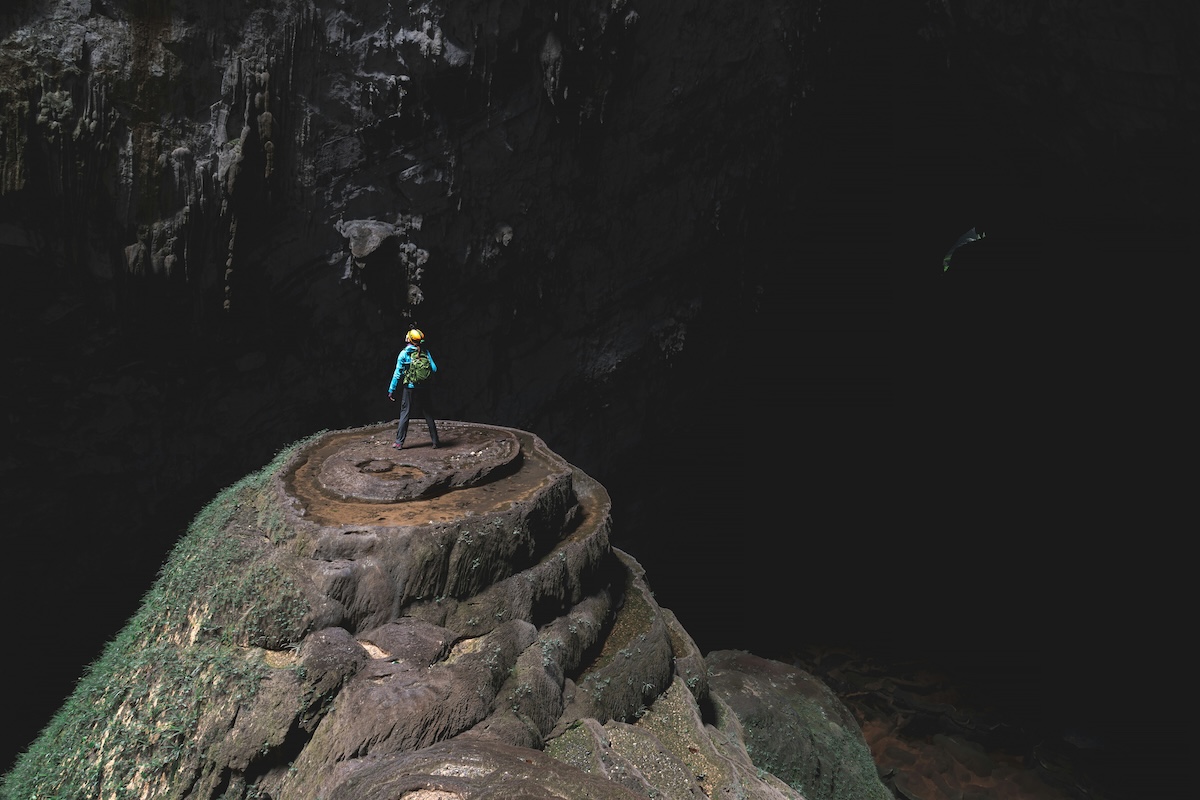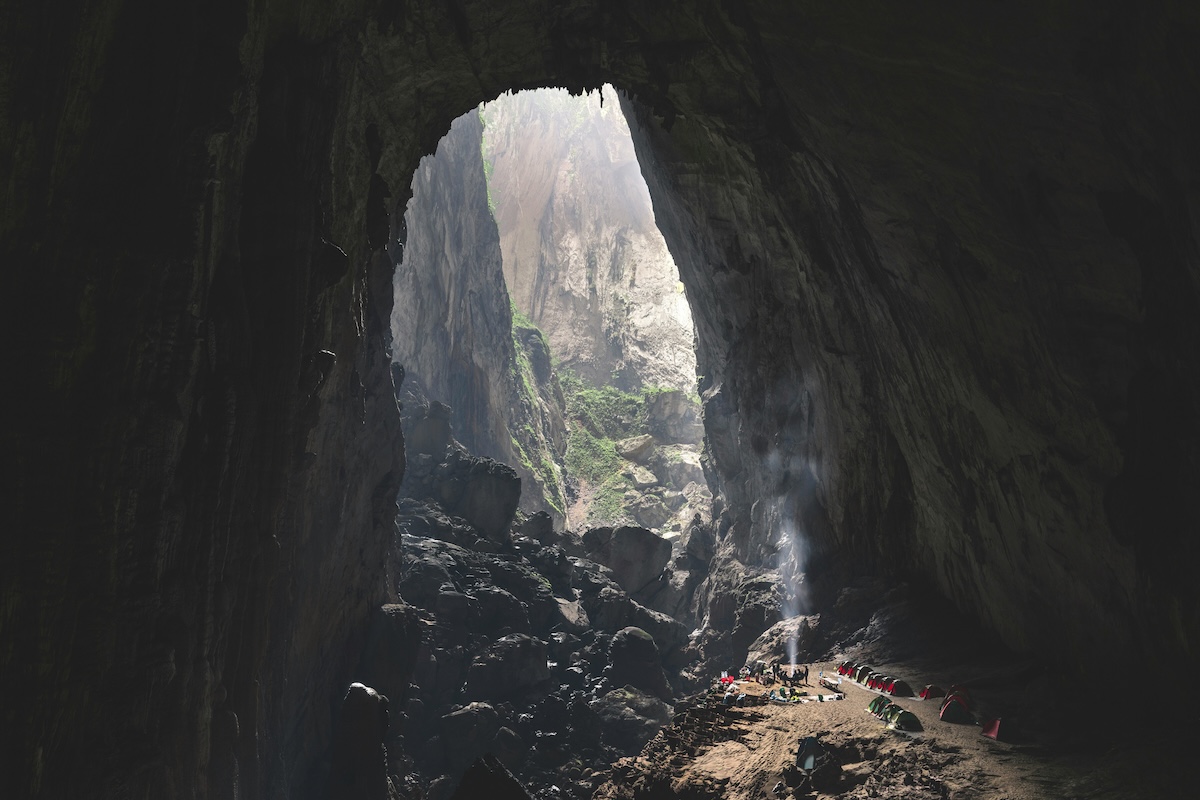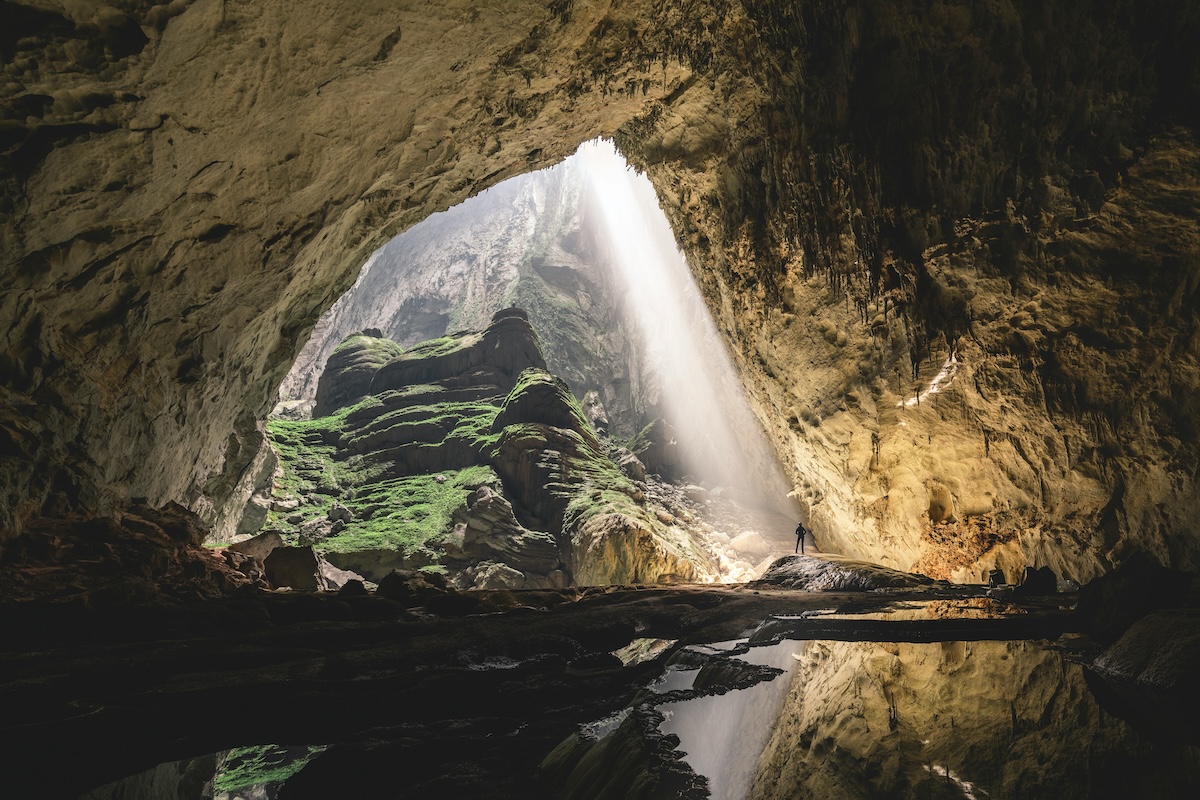
The Cave That’s So Large It Has Its Own Weather System (and a Jungle Inside!)
By: Sarah Stone
Skip to Section
Deep within Vietnam’s Phong Nha-Ke Bang National Park lies something extraordinary: a cave so massive it could comfortably house a 40-story skyscraper. But what makes Son Doong Cave extra-remarkable is that it has created its own miniature world, complete with a unique weather system and a thriving jungle ecosystem.
A Hidden Giant Awakens
The story of Son Doong begins like many great discoveries – with a fortunate accident. In 1991, local farmer Ho Khanh was traversing the dense Vietnamese jungle during a gathering expedition when he noticed something unusual: a curious opening in the limestone karst emanating a whistling wind and the distant sound of rushing water. Khanh didn’t think it was important then, so he let it be.
It would take nearly two decades to reveal the cave’s true magnitude. In 2009, when Khanh led a British Cave Research Association team to the site, they realized they had stumbled upon something unprecedented in the history of cave exploration. The BCRA’s official expedition reports document their initial astonishment at the cave’s dimensions: passages over 5 kilometers long, chambers up to 150 meters wide, and ceilings soaring more than 200 meters high. With a volume of 38.5 million cubic meters, Son Doong would prove to be the largest cave passage ever discovered.
A World Within a World

Photo by Andrew Svk on Unsplash
It may not be easy to picture 38.5 million cubic meters but to give you an idea, the cave is enormous enough to have its own localized weather system, operating like a miniature version of Earth’s atmosphere but with some uniquely cave-shaped twists.
The cave maintains a fairly constant temperature year-round, hovering around 73°F (23°C). Meanwhile, the outside world experiences dramatic temperature swings—especially in Vietnam’s tropical climate, where summer temperatures can soar past 100°F (38°C).
When warm, moisture-laden air from outside flows into the cave through its massive entrance and several skylights, it meets the cooler cave air. This encounter triggers a process meteorologists call adiabatic cooling – the same phenomenon that creates clouds in our sky. As the warm air rises and cools within the cave’s enormous chambers, its water vapor condenses into visible clouds that can fill entire caverns.
The cave’s unique architecture creates its own wind patterns, too. The temperature difference between the cave’s entrance and its skylights generates air currents that can be felt throughout the system. During certain times of day, these currents become strong enough to create a natural wind tunnel effect.
This internal weather system becomes even more dramatic during Vietnam’s rainy season. When heavy rains fall outside, the cave’s skylights act as massive funnels, creating spectacular underground waterfalls that can empty into pools that can reach 90 to 100 meters deep. The resulting mist and spray, combined with the existing cloud formations, can reduce visibility inside the cave to just a few meters.
This weather system creates distinct microclimates throughout the cave. Areas near the dolines experience more variable conditions, while deeper chambers maintain more stable environments.
The cave’s weather patterns also play an essential role in its continuing formation. The constant cycle of condensation and precipitation gradually dissolves more limestone, slowly but surely making this giant cave even larger.
The Garden of Edam: An Underground Ecosystem

Photo by Andrew Svk on Unsplash
Son Doong Cave’s Garden of Edam demonstrates how life can thrive in unexpected places. This underground ecosystem exists because of massive ceiling collapses in the cave’s roof, known as dolines, which created openings approximately 91 meters in diameter. These skylights allow a good amount of the surface sunlight to penetrate the cave floor, providing enough light for photosynthesis.
The garden is about 250 meters tall and 175 meters wide, developing in distinct sections where the dolines allow sunlight to reach the cave floor. The environment inside maintains high humidity levels, typically above 90%, combined with temperatures ranging between 68-73°F (20-23°C) year-round.
Research teams have documented over 200 plant species within this underground garden. The vegetation grows in layers, similar to a surface rainforest: ground-level mosses and ferns form the base layer, while larger plants and trees reaching up to 15 meters create a middle canopy. Vines and climbing plants connect these layers, often growing along the cave walls and wrapping around the formations.
The garden’s soil composition is also interesting: core samples revealed a mixture of traditional cave sediments, organic matter from the surface that has fallen through the dolines, and decomposed plant material from within the cave. This rich substrate, combined with regular water availability from the cave’s weather system, provides ideal growing conditions for plant life.
The garden also serves as a habitat for many cave-adapted species. There are unique populations of insects—such as millipedes, spiders, beetles, and butterflies—and fish, which have become blind and lost pigmentation as part of their adaptation. Birds regularly enter through the dolines, contributing to seed dispersal and helping maintain the garden’s diversity. Cave crickets, swiftlets, and several bat species have also established permanent populations in this underground ecosystem.
It’s not just the plants and animals that are fascinating here—Son Doong is home to the tallest stalagmites in the world, reaching up to 80 meters high! Based on standard stalagmite growth rates of less than one millimeter per year, these formations likely took 2-3 million years to reach their size.
Can You Visit Son Doong Cave?
Because of the strict protections set by the Vietnamese government around human interaction with the cave, you can only visit through a tour with Oxalis Adventure. Bookings fill up fast and are pretty expensive, and you must have a good level of physical fitness to go on the tour. You cannot visit the cave on your own.
Have you gone caving before? What was it like? Share your stories and tips with the Frayed Passport community!
About the Author
 As the editor-in-chief of Frayed Passport, my goal is to help you build a lifestyle that lets you travel the world whenever you want and however long you want, and not worry about where your next paycheck will come from. I've been to 20+ countries and five continents, lived for years as a full-time digital nomad, and have worked completely remotely since 2015. If you would like to share your story with our community, or partner with Frayed Passport, get in touch with me using the form on our About page.
As the editor-in-chief of Frayed Passport, my goal is to help you build a lifestyle that lets you travel the world whenever you want and however long you want, and not worry about where your next paycheck will come from. I've been to 20+ countries and five continents, lived for years as a full-time digital nomad, and have worked completely remotely since 2015. If you would like to share your story with our community, or partner with Frayed Passport, get in touch with me using the form on our About page.Featured image by by Andrew Svk on Unsplash
Information published on this website and across our networks can change over time. Stories and recommendations reflect the subjective opinions of our writers. You should consult multiple sources to ensure you have the most current, safe, and correct details for your own research and plans.
Frayed Passport is a participant in the Amazon Associates Program, an affiliate advertising program designed to provide a means for sites to earn advertising fees by advertising and linking to Amazon.com. We also may share links to other affiliates and sponsors in articles across our website.




